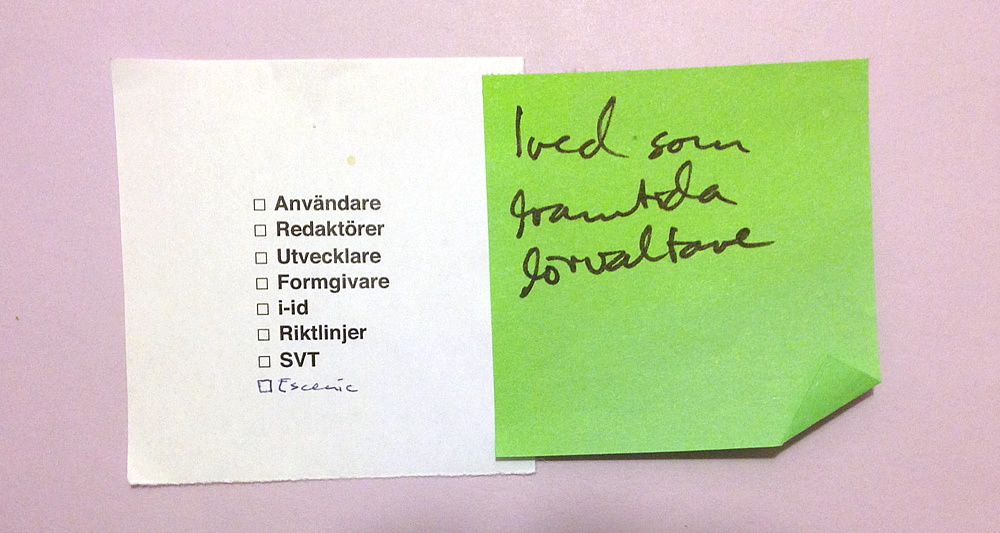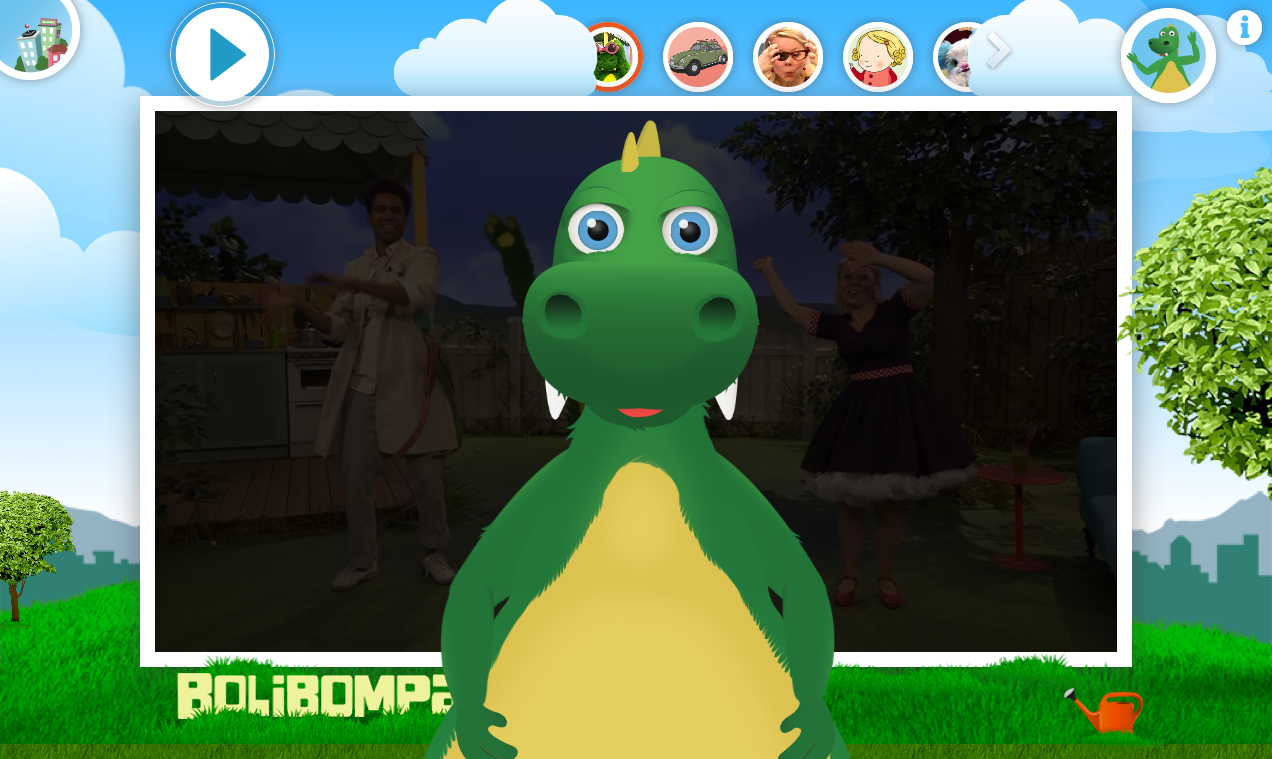The photographed list (and extra Post-It) reside on my desk at SVT. They are a reminder of the very broad range of persons, systems and organizations that I must empathize with and cater to when designing.
The items in this far from complete list translate to:
“Users” – the most important persons for me to satisfy and delight. I must be the user’s representative in the creation of SVT’s digital artefacts.
Editors – the wonderful persons who work each day to fill our sites with entertaining content. I must help them be efficient and remove as many annoyances as possible from the systems.
Developers – those who make it work. I must help them understand what behavior the system should have and also create behavior that can be implemented within the constraints of the development environment.
Graphic designers – the pixel magicians who are instrumental in the processes that lead to users trusting our artefacts. I must communicate research and test results clearly and make the system’s behavior obvious. How else could they create their magic?
i-ID (the virtual team of Interaction Designers at SVT) – my colleagues expect to be kept in the loop and be able to use what I have created in their own projects. I must be clear, graceful and open to their excellent feedback.
Guidelines – we have clear documentation about date formatting, symbols, list behavior etc. External parties publish insights such as the WAI-ARIA recommendation and the many research reports from Nielsen. I must always adhere to these … unless there is a good reason not to.
SVT – the company has a clear public service mission. I must contribute to SVT keeping the promises it makes to the Swedish public.
Escenic (our CMS) – all systems, perhaps especially the good CMSs, have a clear parti. I must adhere to that guiding principle without being defined and restricted by it. It should be a creative constraint.
I-Red (our editorial department, now called “Digital publishing”) as future system owners – although I am part owner of the system during it’s development phases, someone else owns it between those active periods. I must help the future system owners understand the artefacts well enough that they can imagine and order future enhancements.
When I look at the list I am reminded that I have such a big responsibility and am humbled that I have been given the possibility to work with such a broad spectra of stake holders.


